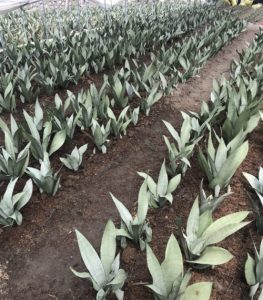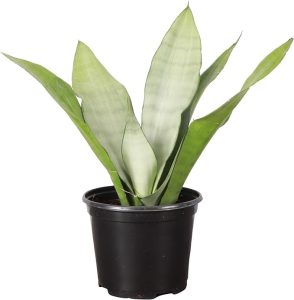- English
- Chinese
- French
- German
- Portuguese
- Spanish
- Russian
- Japanese
- Korean
- Arabic
- Irish
- Greek
- Turkish
- Italian
- Danish
- Romanian
- Indonesian
- Czech
- Afrikaans
- Swedish
- Polish
- Basque
- Catalan
- Esperanto
- Hindi
- Lao
- Albanian
- Amharic
- Armenian
- Azerbaijani
- Belarusian
- Bengali
- Bosnian
- Bulgarian
- Cebuano
- Chichewa
- Corsican
- Croatian
- Dutch
- Estonian
- Filipino
- Finnish
- Frisian
- Galician
- Georgian
- Gujarati
- Haitian
- Hausa
- Hawaiian
- Hebrew
- Hmong
- Hungarian
- Icelandic
- Igbo
- Javanese
- Kannada
- Kazakh
- Khmer
- Kurdish
- Kyrgyz
- Latin
- Latvian
- Lithuanian
- Luxembou..
- Macedonian
- Malagasy
- Malay
- Malayalam
- Maltese
- Marathi
- Mongolian
- Burmese
- Nepali
- Norwegian
- Pashto
- Persian
- Punjabi
- Serbian
- Sesotho
- Sinhala
- Slovak
- Slovenian
- Somali
- Samoan
- Scots Gaelic
- Shona
- Sindhi
- Sundanese
- Swahili
- Tajik
- Tamil
- Telugu
- Thai
- Ukrainian
- Urdu
- Uzbek
- Vietnamese
- Welsh
- Xhosa
- Yiddish
- Yoruba
- Zulu
- Kinyarwanda
- Tatar
- Oriya
- Turkmen
- Uyghur

Me ona ahua rereke me te tino matea nui, Sansevieia-Ma te ingoa o te kowhatu hiku o te snake orchid ranei he hoari hii-tiger - kua riro hei rangatira i waenga i nga tipu o roto. Atu i tona ahua, kua kitea e te Tiger Orchid te angitu i te angitu i roto i te kounga o te hau o roto. Kua whakaatuhia e nga rangahau i runga i Tiger Sy Orchid he nui te kaha ki te horoi i te rangi kia rite ki te tipu haere o te hau ki runga i te hau hau o roto.

Sansevieria Maonshine
Tuhinga o mua
Sansevieria, Maori ki Africal Africal, ka tohua mo te tipu tipu tipu me te rau-hoari-hoari. He tino rongonui te kaha me nga kaha o te tipu o te tipu. Mai i nga taiao whanui ki nga kohungahunga-iti-maama, ka tupu te orchid hiku o te hiku o te hiku o te hiku. Ko tana tono wai iti rawa e rite ana ki te hunga e whai matauranga ana i te mohiotanga, kua peehia ranei mo te waa.
Whakaritenga Pūtaiao mo te Tohu Air
Studies on air-purifying plants started in the 1980s, particularly NASA’s 1989 findings showing how much interior air quality is influenced by plants. Studies have shown that plants can efficiently eliminate volatile organic compounds (VOCs) from the air, including formaldehyde, benzene and ammonia, which usually originate from furniture, buildings, and cleaning supplies. Extended contact to these dangerous gases might have negative consequences for health.
Te kaha o te hiku o te hiku o te tiger mo te horoi hau
Tiger tail orchid’s capacity for purification mostly reflects the elimination of toxic gases. Common indoor pollutants, formaldehyde is commonly found in furniture, flooring, and certain cleaning agents. Studies have shown that via their metabolic process within the plant, tiger tail orchids can collect formaldehyde in the air through their pores and transform it into benign molecules. Tiger tail orchid is a good option for enhancing indoor air quality because of its capacity.
Ko nga Pakeha o roto he mea nui ki a Benzene me te haukini. Ko te mea kei roto i te mimi, he urupa, i ahu mai i te peita me te whakarewa. He kaha ano te kaha o te Tiger Orchid ki te whakakore i nga pūhui kino. Na roto i te mahinga o te metabolic ano, ka uru atu a Tiger Orchid ki a Benzene me te haukini ka hurihia hei whakahiato ki te hunga, ki te tipu ranei.
Ko te Tiger Hite Orchid ano tetahi atu mahi rereke: Ka taea e te whakaahua te whakaahua i te po, te pau o te hauhā me te whakaputa hāora. Ko nga Orchid Orchid Tiger ka taea te tuku i te hāora i roto i te pouri, na reira ko te whakapai i nga ihirangi hāora i te hau, kaore i rite ki etahi atu tipu e pa ana ki te po. Ka awhina tenei ki te whakapai ake i te kounga o te hau o roto.
Tiger one sway orchid te urutau taiao
Tiger tail orchid’s flexibility is crucial in its becoming perfect indoor plant. It may flourish in a range of lighting situations, from gloomy to brilliant. This makes Tiger tail orchid fit for installation in many areas like workplaces, living rooms, and bedrooms and lets it operate in various indoor situations.
Ko nga hiahia o te wai iti me te tauraki o te tauraki o te tiihi hiku e taea ai te tipu ki te hauora me te kore i te mauri. Mo nga momo oranga whakahirahira, ka whakahekehia e te kaha ki te pupuri i nga tipu, a he mea tino pai tenei.
Ngā pānga ki ngā taiao o roto
Ko nga Orchid High Orchid kaore noa i te whakapai ake i te haumira o roto me te oranga hinengaro engari ka awhina ano hoki ki te horoi i te hau. I roto i te taiao Arid, ka taea e te whakawhitinga o nga tipu te makuku me te whakaara i te hau hau, na reira ko te punaha kiri me te punaha manawa. Ma te nui haere o te haumākuta, ka awhina pea tetahi ki te karo i nga kiri maroke me nga raru o te manawa i kawea mai e te maroke.
Psychologically, indoor plants may help to ease visual discomfort and lower tension and anxiety. Studies have shown that contact with plants may raise people’s happiness and productivity, therefore enhancing their general quality of life. The Tiger Tail Plant’s exquisite look and vegetation naturally ease the interior surroundings.
Te whakato me te tohutohu tiaki
He mea nui te whakato me te mahi tiaki me te whakarite i te tipu o te hiku o Tiger e mahi pai ana i te whakakii hau. Ahakoa ko te tipu o te hiku o Tiger he ngawari ki te taiao, te rama tika, te wai, me nga tikanga o te oneone ka awhina i te kaha horoi hau. Ahakoa ka taea hoki te whakaae i nga tikanga iti, ka tupu te tipu o te hiku o te hiku o Tiger i roto i te maama. Ko te maamaa o te ra tika kaha ki te aukati i te kino o te rau.
Whakamātauria kia kaua e eke ki te waipuke me te tupato i te wa e whakainu. Ko nga tipu o te hiku o Tiger e hiahia ana kia iti ake te wai; Na, he pai ake te tatari kia maroke noa te whenua i mua i te whakainu. Ko te kowhiri i tetahi oneone kua horoia ka awhina pea ki te aukati i te tupono pakiaka. Ko nga tipu o te hiku o Tiger e kore e hiahiatia kia whakatipuhia te tipu; Engari, he tongi wai whanui kua waimeha i te wa e nui ana nga marama.
Tiger Tail Plants’ proper development depends also on maintaining the appropriate temperature and humidity. Tiger Tail Plants like warm surroundings; the ideal growing temperature falls between 15° and 25°. Though it can live in low humidity conditions, a little rise in humidity helps its development.

Tipu nakahi
Sansevieia ehara i te mea utu noa mo ona hiahia atawhai iti me te ataahua hei tipu o roto, engari mo tana mana horoi hau whakamiharo. Ahakoa te whakaara i te taiao o roto ma te whakanui i te hāora hāora me te haumākū, ka taea te whakakore i nga matū kino ko Formaldehyde, Benzene me te haukini mai i te rangi. Waihoki ko te painga mo te hauora hinengaro ko Sansevieria, e whakarato ana i te taiao taiao me te ataahua mo te waahi o roto. Na roto i te whakato me te tiakitanga me te tiaki, ka tino mahia e tatou te mahi o te sansevieria i te purea o te ao, na reira ka pai ake te kounga o te ao.



